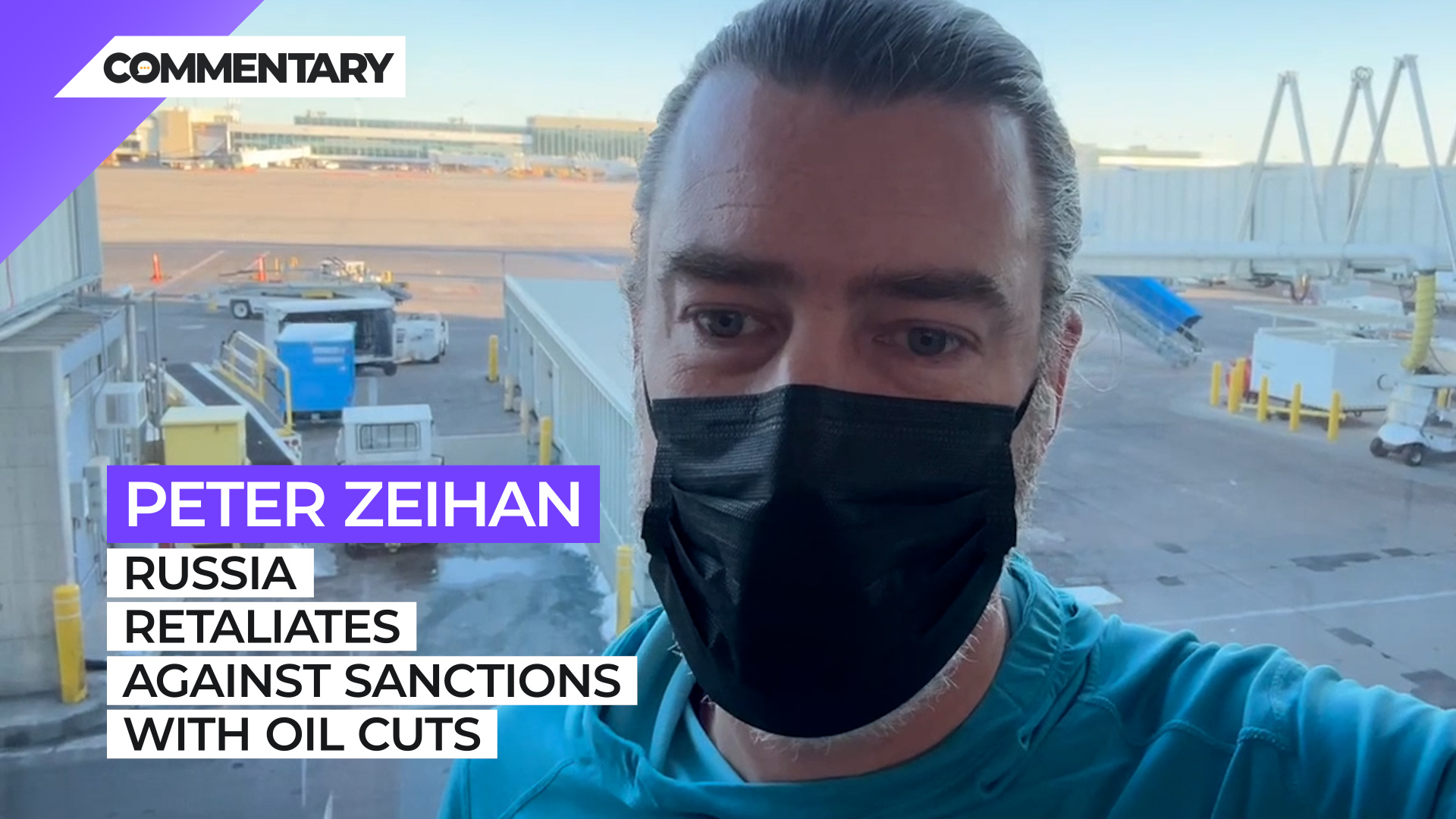
Commentary
-
Our commentary partners will help you reach your own conclusions on complex topics.
Hey everyone, Peter Zeihan here coming to you from my home away from home, the Denver Airport. It is the 13th of February and the news over the weekend is that the Russians have announced a near imminent plan to cut 500,000 barrels a day of oil production, which comes out to about one half of 1% of global production and only 10% of Russian exports. Now, for those of you who have been watching me for a while, you know that I’m really concerned about the stability of Russian production, not just because of the war, but because of their geology. Most oil production comes from the permafrost. And if there’s a situation where the crude can’t flow, whether because people aren’t taking the crude away at their export points, or because they shut it to themselves, the crude in the wellhead freezes into gel, and the water that comes up as a byproduct freezes into ice and it pops the wells from the inside and repairing that damage the last time around to 30 years.
And last time, most of the oil services firms were part of the process, this time they’re gone. So if we do lose Russian oil production for any reason, it’s not just gone, it’s gone for a very, very, very long time. And that is not priced into the market at all. Now, the 500,000 is probably not a problem. The Russians have about a million barrels per day from their western fields that are not in the permafrost. And so they can shut those in and bring that back on and shut it in again and bring it back online. In fact, they did this in the early weeks of the war last time when people weren’t taking their crude. Well, now we have a couple more things in play.
The European oil ban is in place, the European refined products ban is in place. It’s not technically illegal to buy or ship these products, but you have to do it without European insurance or vessels if it’s under a certain price point. And that is reducing demand for Russian product around the world because they’re having a hard time getting the stuff out. Also, the breakeven price for a lot of Russian crude is between 40 and $60 a barrel. And now that the prices that the Russians can charge are under that threshold, the Russians don’t have an economic incentive to pump the stuff in many cases. So 500,000 has taken away half of the buffer. We’re not to the point where we’re going to see permanent shut-ins but we are not all that far away. All right. That’s it for me. Until next time. Bye
-
Hurricane Helene hits US coast, Appalachia and beyond
Hurricane Helene hit Florida and Georgia overnight between Sept. 26 and 27 as a Category 4 hurricane, and accompanying storms will continue reaching deeper into the continental United States today. Dangerous flash flooding from the hurricane, known as storm surge, was some of the worst flooding that the Tampa Bay area has ever seen, and… -
Israel holds upper hand against Lebanon, Hezbollah and Iran
On Wednesday, Sept. 25, Hezbollah launched a ballistic missile at Tel Aviv in retaliation for Israel’s explosive pager attack that blew up devices across Lebanon. Although Israel’s defense systems intercepted the surface-to-surface missile, the attempted strike on Tel Aviv marked a significant escalation by Hezbollah. Since the siege on Gaza began, shortly after the Oct. 7, 2023,… -
The Sinaloa Cartel civil war
Fears of a civil war within the Sinaloa Cartel are growing as violence between competing factions within the cartel continues. The Mexican Army has dispatched around 600 elite troops to Sinaloa to help quell those fears, in addition to roughly 2,200 regular soldiers and National Guard. Watch the above video as Straight Arrow News contributor… -
New Ukrainian weapons hit Russia where it hurts
Ukrainian drones struck a major Russian ammunition depot, triggering a massive explosion that was captured on camera. According to the Ukrainian military, 2,000 tons of munitions had arrived at the depot before the attack. Over the past two years, Ukraine has significantly increased its domestic drone production, allowing it to scale up attacks on military… -
Weighing social costs vs. economic benefits on immigration
Global human migration is one of the defining elements of our current historical era, according to the United Nations. Migrants face both the incentives to leave — forced out by climate change, crime and corruption, extreme poverty or violence — and incentives for where to go, based on available job opportunities and so on. Migration…
Latest Stories
-
 Getty Images
Getty Images
Jay-Z sues sexual assault accuser and lawyer, says Roc Nation lost $20 million
-
 Getty Images
Getty Images
Democrats want DOJ attorney who dropped Eric Adams case investigated
-
 Getty Images
Getty Images
Millions of users’ personal data shared with US law enforcement: Report
-
 Getty Images
Getty Images
Republican leaders urge a pause on town hall meetings
-
 Getty Images
Getty Images
Media spins Trump, Zelenskyy Oval Office meeting: Bias Breakdown
Popular Opinions
-
In addition to the facts, we believe it’s vital to hear perspectives from all sides of the political spectrum.
Latest Opinions
In addition to the facts, we believe it’s vital to hear perspectives from all sides of the political spectrum. We hope these different voices will help you reach your own conclusions.
The opinions published in this section are solely those of the contributors and do not reflect the views of Straight Arrow News.





















Latest Commentary
We know it is important to hear from a diverse range of observers on the complex topics we face and believe our commentary partners will help you reach your own conclusions.
The commentaries published in this section are solely those of the contributors and do not reflect the views of Straight Arrow News.
Dr. Frank Luntz
Pollster and Political Analyst‘Biased’: What Americans think of ‘mainstream media’
‘Getting rid of them’: Americans discuss Trump and immigration
‘Woke’: Why some Biden 2020 voters backed Trump in 2024